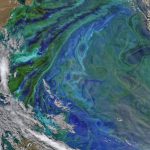 August 3, 2020 4:48 pm
Published by Climate Extremes
August 3, 2020 4:48 pm
Published by Climate Extremes
CLEX researchers used real-world observations with satellite observations to calculate the quantity of nutrients carried into the Subantarctic Zone by mesoscale eddies. They found these eddies carried high nitrate and low silicate waters into the Subantarctic Zone.
 March 16, 2020 2:05 pm
Published by Climate Extremes
March 16, 2020 2:05 pm
Published by Climate Extremes
Observational studies over Darwin, Australia, show gravity waves provide a plausible explanation for the patterns of noteworthy variability in mesoscale motions. The findings suggest a two‐way coupling of clouds to their environment
 October 15, 2019 4:18 pm
Published by Climate Extremes
October 15, 2019 4:18 pm
Published by Climate Extremes
This research uses commercial aircraft data and high-resolution simulations to study a case in 2005 over the United States where severe turbulence was encountered about 50km away from a large mesoscale convective system. Of relevance, current aviation turbulence avoidance guidelines recommend avoiding storms by 32 km (20 miles).
October 16, 2018 5:44 pm
Published by Climate Extremes
this talk will address methods in which urban microclimatology can be employed as the key tool for a) understanding the pedestrian-/street-scale phenomena and processes, b) providing methodologies for climate-conscious design solutions, and c) informing accurate assessments of mesoscale climate.



